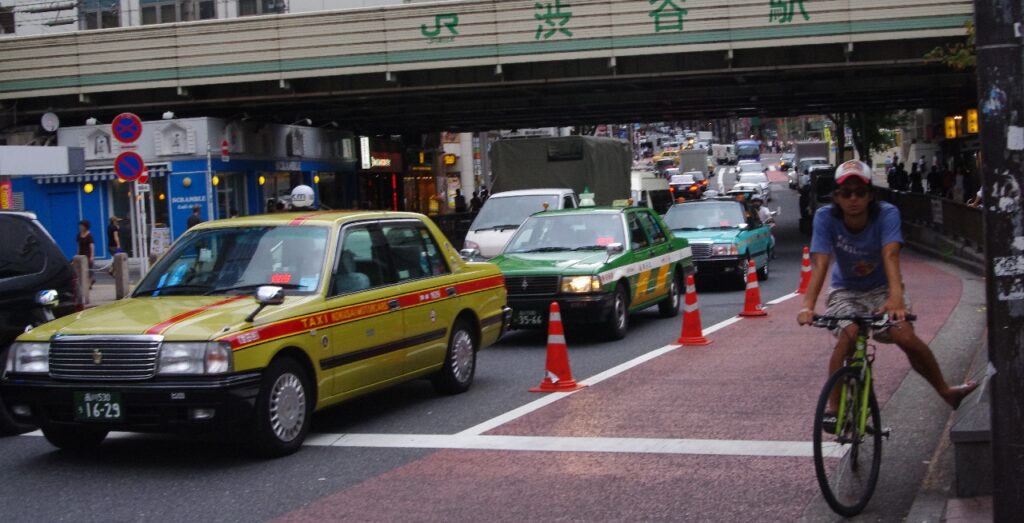Posts Tagged: Trip
The Japanese Taxis
Someone says I have a peculiar tendency to dissect all of my experiences and place them in labelled boxes for sake of understanding. It’s possibly true and it is with the same spirit that I found myself dissecting Japan during my recent visit over there. I was invited to teach at a Summer School for Master students in Biology and Computing at the Tokyo Institute of Technology and I decided to spend a few more days sightseeing. So for those who ask what I found most striking about Japan, my answer is going to be “Taxis”.

Taxis like this are everywhere. Why are they special? Look at the car. Not sure what model may be, but one can easily bet this car was produced and sold sometime in the 80’s and then somehow time stopped and it never got old. It is perfectly polished, no tear and wear, not a single sign of ageing internally or externally. The car is fitted with improbable technological wonders, coming out from an improbable sci-fi movie from the 80’s: absolutely emblematic is a spring operated mechanism that open and closes the rear door. This taxi represents Japan for me. This is a country that has lived a huge economic boom from after the war all the way to late 80’s, with annual growth that surpassed any historical record. Then, suddenly, in 1991, met an equally dramatic economic crisis with the explosion of a giant bubble and everything stopped. Economists call the following years The Lost Decade because not much moved after the burst and let me tell you: it’s perfectly visible. To this date, Japan still didn’t really recover from the bubble.

Reaction of the Japanese bank to the 91 bubble was somehow similar to what observed nowadays in the rest of the world after the 2008 crisis: quantitative easing, continuous bailout and a rush to save banks. Bail out was so common that Japan in the 90’s was said to be “A loser heaven”. And yet, society responded very differently: unemployment rate did not really sky rocket as it is happening now pretty much everywhere else. Instead, unemployment in Japan remains one of the lowest world wide and a huge deflation took place instead. My naive gut feeling cannot help but putting these two things together but I don’t know enough to claim with certainty that these two are really consequence of each other so go look for an answer somewhere else, and let me know if I was right, please. Anyhow, what is interesting is that the fact that people maintained their job – yet with decreasing salaries – and that meant society didn’t really collapse but simply froze. And that is why travelling in Japan is like travelling back in time to the early 90’s: everything, from furniture in hotel room to cars and even clothing and fashion, stopped in 1991. Granted, it’s a technological advanced 1991, filled with wonders of the time. Remember the dash of Delorean from the Back to the Future (1985)? Yes, that is what Japan looks like. Why did thing did not get any old? Why does the Taxi above still looks mint new? A Japanese friend gave me the answer: Japan has a tradition of conservatism as opposite as consumerism. In Japan a tool that is important for your life or job, is a tool to which you must dedicate extreme care. Thus, taxi drivers polish and clean and care and caresse their cars as the Samurai took care of their swords. Paraphrasing the first shogun Tokugawa Ieyasu: “the taxi is the soul of the taxi driver”1. Here, some pictures from the trip.
1. Well, the original citation would be The Sword is the soul of the Samurai. This goes a a bit off topic but during one of my jetlegged night I found this video on the history of Samurai swords quite interesting.
